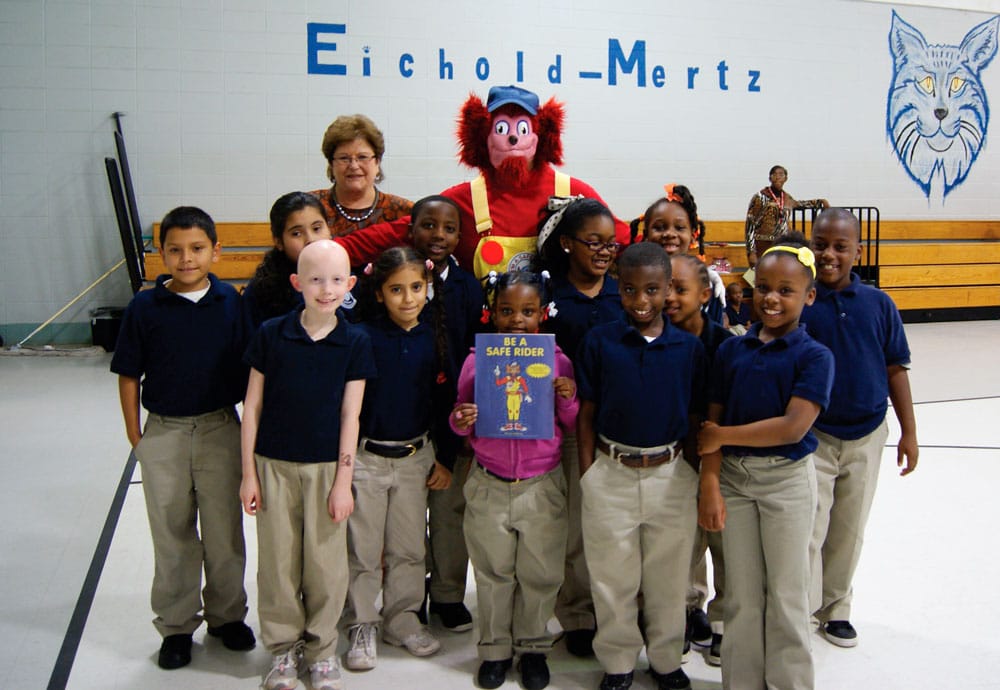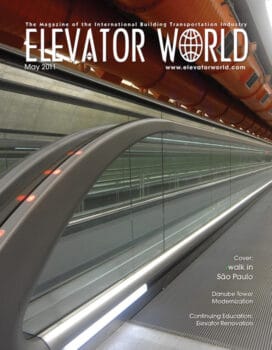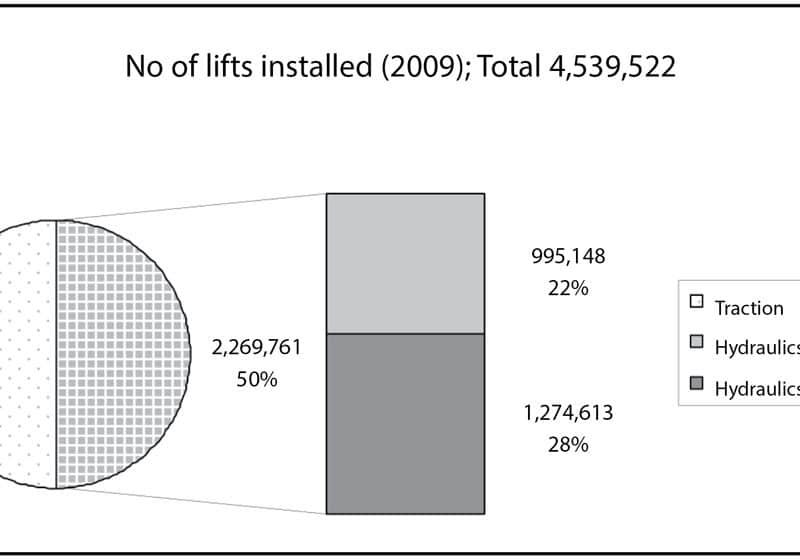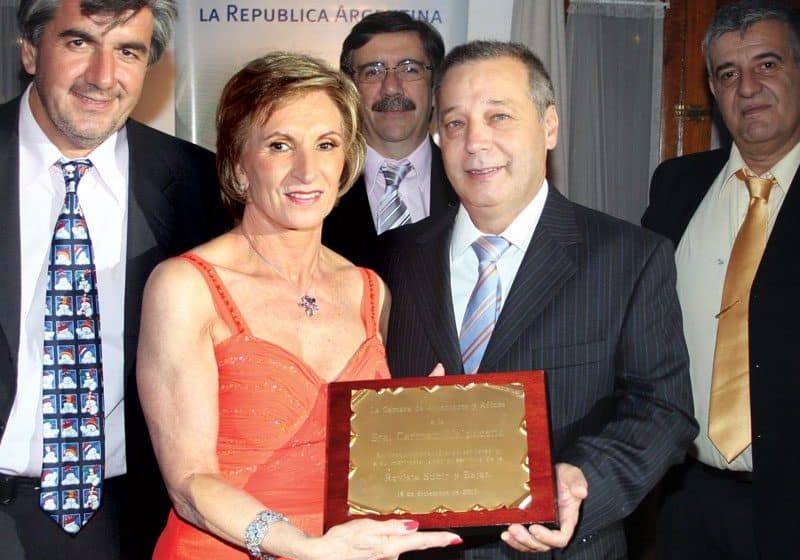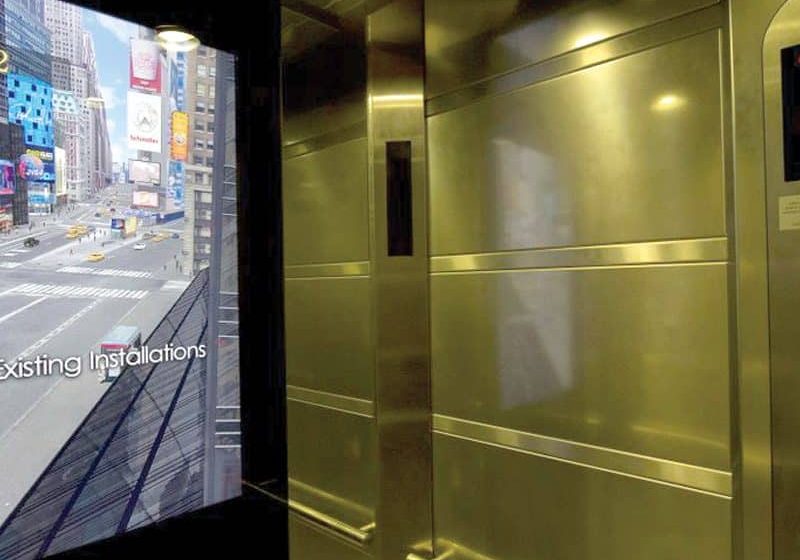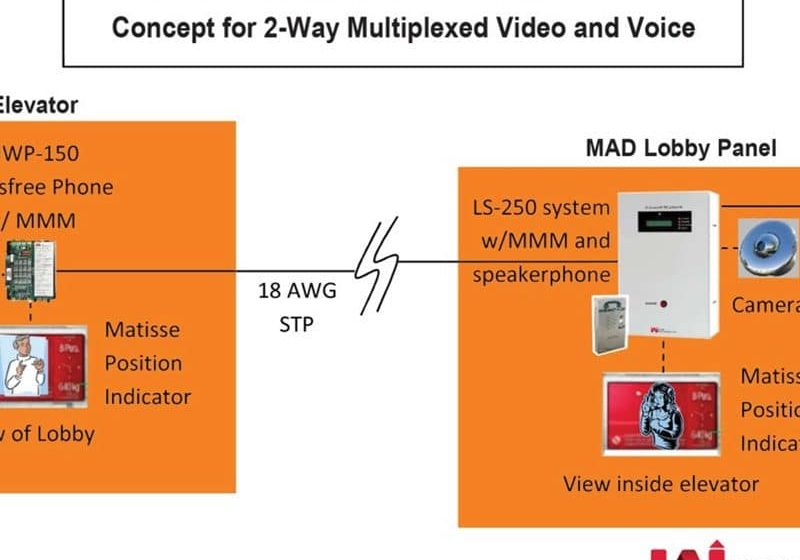An overview of the Elevator Escalator Safety Foundation’s annual meeting held on February 23-26 in Mobile, Alabama.
The annual Elevator Escalator Safety Foundation (EESF) meeting was held on February 23-26 at the historic Battle House Hotel in downtown Mobile, Alabama. The event kicked off with a Wednesday afternoon visit to Eichold-Mertz Elementary, where ELEVATOR WORLD Publisher Ricia S. Hendrick and John Koshak spoke to the school’s 125 second-grade students about elevator and escalator safety and presented the Safe-T Rider® video.
The children were attentive to and laughing with the video, with a few even swaying along to the beat of Safe-T Rider’s “rap” message. Afterward, the students asked questions, and each child received a booklet to complete and return to the school to collect a prize. Soon after, the Safe-T Rider mascot made his way into the auditorium and the children went wild, giving him an enthusiastic welcome.
Thursday saw a few closed-door meetings, including the orientation of new EESF board members and an executive-board meeting. The afternoon was capped off with a tour of both the EESF headquarters and ELEVATOR WORLD offices, both in Mobile. After a long day of meetings, Thursday night’s reception provided an evening of relaxation. Held in the Crystal Ballroom of the Battle House, arriving guests were greeted by the official ambassadors of the city of Mobile, the Azalea Trail Maids. Attendees seemed to enjoy the added dose of Southern hospitality.
Martha Hulgan and Barbara Allen welcomed the evening’s guests before introducing Campaign Chairman of NAESA International Dean McLellan, who gave a brief presentation and thanked EESF members for their hard work. He spoke on the history and achievements of both EESF and NAESA International. McLellan was followed by the hotel’s historian, who gave an overview of the Battle House Hotel, it’s his-tory – among its previous guests are former U.S. Pres-ident Woodrow Wilson and Elvis Presley – and even touched upon the history of the building’s elevator system.
February in Mobile means Mardi Gras festivities, and Thursday night was no exception. The hotel was located directly on the evening’s parade route. As the roar of the crowd on the streets grew louder and the sound of drums drew nearer, attendees stepped out to enjoy the parade. With each passing float, the visitors got more and more into the celebration, and by parade’s end, all involved were adorned with beads, and munching on moon pies.
The annual general membership meeting began promptly at 8am on Friday morning in one of the hotel’s many conference rooms. EESF Chair Michael J. Ryan welcomed those in attendance, thanking them for their support and hard work. Ryan announced that this meeting would be his last serving as chairman and that Vice-Chairman Rob Merlo would succeed him, thus making John Koshak the incoming vice chair.
With the meeting underway, EESF Program Director Laurie Dueitt gave an overview of the foundation’s pro-grams: Safe-T Rider, Rise Up Safe Rider and A Safe Ride®. To date, the Safe-T Rider program has reached more than seven million children, and the annual report for 2009/ 2010 showed that the program reached 607,581 children, 87% of the 2009/2010 goal of 700,000. The goal of the 2010/2011 program is once again to reach 700,000 students. As of February, 425,550 children had been reached (60% of the goal). Dueitt also spoke on the difficulties of getting the free program into classrooms and to children. One member commented on the issue, saying he or she never knew how hard it would be to “give something away.” Though it may be a struggle to get the program to its tar-get audience, statistics showed that once there, 92% of the audience was retained, meaning that nearly all schools and teachers who requested the program administered it.
Tom Sybert spoke on the status of the Rise Up Safe Rider program targeted at the college-age demographic. Sybert stated that university interest in the program has been low, but the program is working to promote and build membership. One of the reasons for such difficulty in getting the program on university schedules is because the field of competition is overcrowded with organizations and programs all vying for a limited block of time on orientation schedules. Also, the chain of command is different at every university, making it complicated to get in touch with or even locate the appropriate individual to approach about introducing the program to a campus.
The organization is retooling its other program, A Safe Ride. Currently geared toward senior citizens, the pro-gram will shift focus to the general adult population. This change in direction will see a redesigned and more appealing DVD, guide and workbook released soon.
Members agreed that, even with the other programs, their main focus lies with Safe-T Rider due to the im-pact it has on children. In addition to teaching responsibility, the program is designed to reach parents and siblings, as well, educating them about elevator and escalator safety through children sharing what they’ve learned. Due to this, the pro-gram has actually reached a much wider audience.
The main issue of the day revolved around budget planning and how the stalled economy has affected the organization. The board noted that corporate contributions were down, though fundraising through events was up. Members put forth and debated varying options and ideas for gaining more financial support, which led into a lively budget discussion. Three budgetary options were presented for the 2010/2011 year, with the executive board recommending a moderate budget over one with a large deficit, or even a break-even budget. This moderate choice would see the goal of reaching children through the Safe-T Rider program scaled back to 500,000, along with reduced staff and a deficit of US$14,000. The members voted and agreed to follow the moderate budget for the next year. Members retained an optimistic outlook on the upcoming year, and board members reminded every-one that contributions could rise to alleviate the deficit and restore the goal of 700,000 children.
EESF is planning to reach one million children with the Safe-T Rider program by 2015/2016 and is working to get the program into more schools. It is also looking to expand contacts and partner with more groups, such as the Boy Scouts of America. The group’s ultimate goal is for the program to become a resource for schools, organizations and after-school groups. The foundation is also interested in getting their programs into public areas, such as malls, airports and metro stations.
Before the meeting adjourned, remaining business was addressed, and a few special awards were presented. Ryan swore in the organization’s officers and directors for the next year of service. To honor their time serving as members of the board, José Upegui (not present), board member since 2008, and Doug Witham, board member since 1994, were presented with plaques. Upegui and Witham are retiring from EESF this year. In addition, Ryan presented EESF of Canada with a check in honor of the Peelle Co. employee Christine Horner, who partook in Chile’s Atacama Crossing, a six-day, 250-km footrace across Chile’s Atacama Desert. Lastly, incoming Chairman Rob Merlo presented Ryan with a plaque to commemorate his years of service with the group.
Once all business was wrapped up and the meeting adjourned, attendees met at Veets, a local club, to enjoy a Mardi Gras-themed party and view the evening’s parade. The 2011 meeting was well attended, with many great discussions put forth by members, and much was accomplished. The 2012 annual general meeting is currently in the planning stages, with meeting dates and locations to be announced in the near future.
Get more of Elevator World. Sign up for our free e-newsletter.
